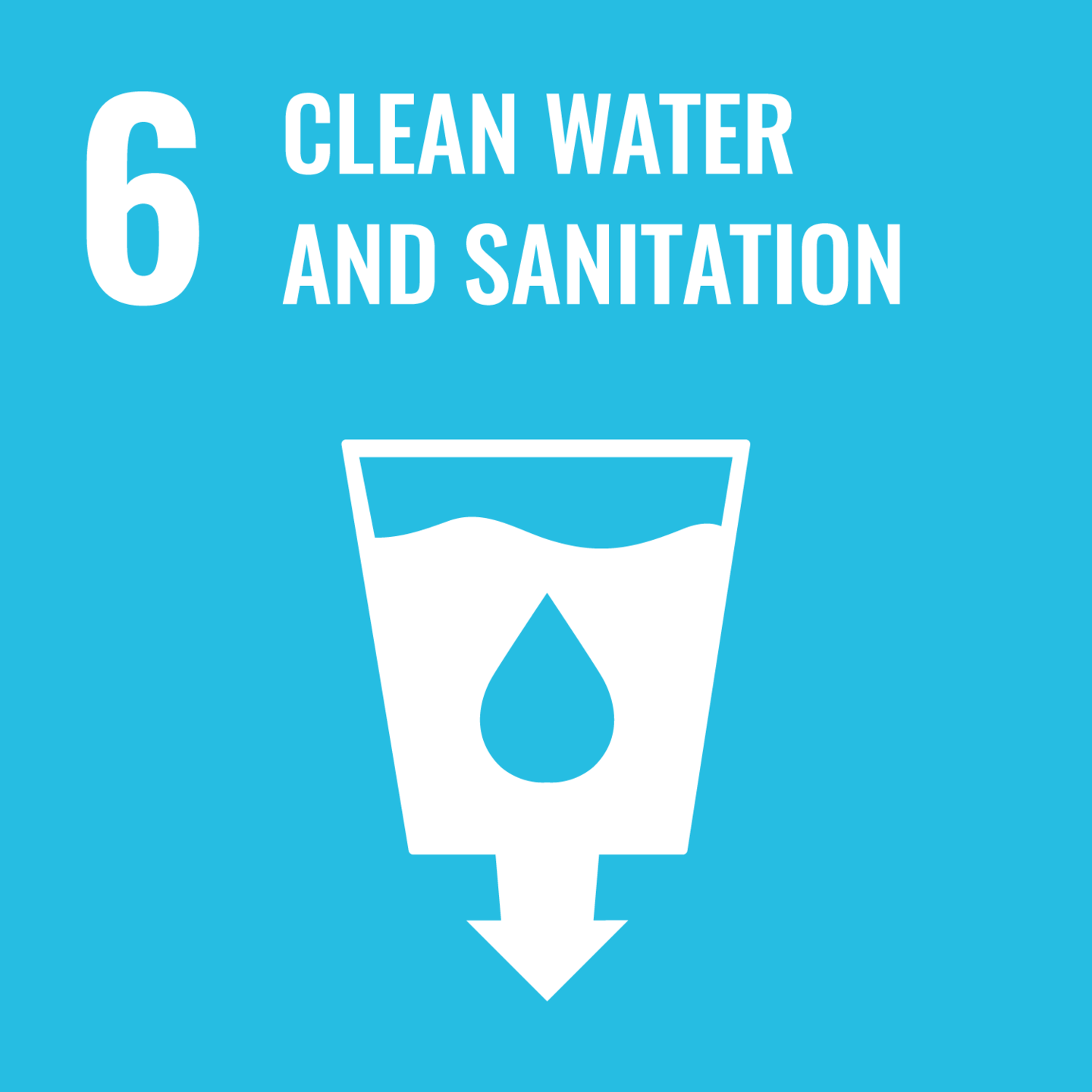SDG 6
Ensure availability and sustainable management of water and sanitation for all

In 2021, an estimated 4.2 million cigarette butts were picked up during beach clean-ups. This represents only a fraction of the 6.5 trillion cigarettes produced worldwide each year, at least 75 percent of which end up in watercourses and oceans. [1] This is in stark contradiction to the sixth UN Sustainable Development Goal, which calls for ensuring the availability and sustainable management of water and sanitation for all. Smokers often throw cigarettes on the ground, on the pavement, on the lawn, from where the rain washes them into the streets and drainage tunnels, eventually reaching the sea via watercourses. Switzerland is no exception: in Geneva alone, smokers throw 476,000 cigarette butts onto the street every day.[2]
Cigarette butts mainly consist of the filter. This is made of cellulose acetate, a non-biodegradable plastic. That is why they remain on beaches and at the bottom of bodies of water for around 15 years. Eventually, they break down into small particles that are ingested by aquatic life. They also release numerous toxic substances such as arsenic, lead and ethylphenol, which pollute the water.[3] A single butt is enough to pollute 1,000 litres of water.[4]
But butts are not the only problem. In 2015, 12,089 lighters, 58,672 cigar tips and 33,865 cigarette packets were picked up in flowing waters in the USA.[5] Recently, used e-cigarettes have also been added to the list. They contain electronic circuitry, batteries with lead and mercury, and liquid cartridges with nicotine salts and heavy metals that can pollute large bodies of water.[6]
In the poorer countries where most tobacco plantations are located, tobacco production reduces the drinking water available to the population. The production of one tonne of nicotine-containing tobacco leaves requires 2,925 cubic metres of water. This makes tobacco cultivation one of the most water-intensive of all. In comparison, one tonne of sugar requires 200 cubic metres, and one tonne of grain 1,600 cubic metres.[7]
Because tobacco is cultivated in monocultures, large quantities of pesticides and fertilisers are required, which seep into the groundwater and nearby watercourses. Imidacloprid and bromomethane are two of the most commonly used substances that are extremely toxic. Another pesticide that is often used is 1,3-Dichloropropene. It causes respiratory problems and skin irritation in humans and is potentially carcinogenic.[8]
After the tobacco leaves have been harvested, a lot of water is also needed during processing. The dried tobacco has to be treated with steam to ensure a certain humidity and to apply additives. Leaf veins and tobacco dust are mixed with water to add them to the tobacco blend of the cigarettes.
For example, 3.7 litres of water are needed to produce one cigarette.[9] And the global production of cigarettes (7.5 t) requires about 22 billion cubic metres of water per year. [10] More vividly for ordinary citizens: someone who smokes a pack of cigarettes a day for 50 years uses 1.4 million litres of water.
Despite its disastrous environmental record, the tobacco industry refuses to accept responsibility. On the contrary. It takes numerous allegedly charitable initiatives to divert attention from its failures. The cigarette manufacturers participate in most beach clean-up or ashtray distribution campaigns, where the emphasis is on consumers' own responsibility; they are not supposed to throw away their cigarettes carelessly.
It would be easy for the industry to solve the problem and develop environmentally friendly filters.[11] Instead, they bring "biodegradable" cigarettes onto the market, which actually decompose faster, but release more toxins.[12] The tobacco industry also invests large sums to conceal its responsibility for water pollution and drinking-water shortages. For example, Philip Morris International gave a presentation at the UN Global Compact in 2016, claiming that tobacco cultivation is less water-intensive than tea and chocolate.[13] Yet in their communication, cigarette manufacturers deliberately report their annual water consumption without taking into account the consumption of their suppliers.
In order to at least partially prevent the cigarette industry from violating the universal right to sufficient clean water, it would have to be subjected to the polluter pays principle. The costs of picking up and disposing of discarded butts, e-cigarettes and lighters would be charged to the industry that causes them, not to consumers. Specifically, this could be achieved with increased taxes on tobacco-containing products. Such measures are currently being considered in the European Union, France, Ireland, the UK and the US.[14]
In the US, some communities go even further: more than 300 have banned smoking on their beaches; over 1,500 in their parks.[15] But the trend is also making itself felt near us: In April 2021, Barcelona banned smoking on its beaches.[16] This gives a little respite to the watercourses and coasts that are littered with cigarette waste.
[2] https://www.letemps.ch/suisse/geneve-sattaque-aux-476-000-megots-jetes-quotidiennement-rues
[3] https://exposetobacco.org/wp-content/uploads/TI-and-environment.pdf
[4] Green, Amy & Putschew, Anke & Nehls, Thomas. (2014). Littered cigarette butts as a source of nicotine in urban waters. Journal of Hydrology. https://doi.org/10.1016/j.jhydrol.2014.05.046
[6] Ibidem
[7] https://hess.copernicus.org/articles/15/1577/2011/hess-15-1577-2011.pdf
[8] https://tobaccotactics.org/timeline/pesticides/
[9] https://www.unfairtobacco.org/wp-content/uploads/2017/05/tobacco_antisocial_web.pdf
[10] Cigarette Smoking: An Assessment of Tobacco’s Global Environmental Footprint Across Its Entire Supply Chain, Maria Zafeiridou, Nicholas S Hopkinson, and Nikolaos Voulvoulis, Environmental Science & Technology 2018 52 (15), 8087-8094, DOI: 10.1021/acs.est.8b01533
[11] https://exposetobacco.org/wp-content/uploads/TI-and-environment.pdf
[12] Koroleva, E., Mqulwa, A.Z., Norris-Jones, S. et al. Impact of cigarette butts on bacterial community structure in soil. Environ Sci Pollut Res 28, 33030–33040 (2021). https://doi.org/10.1007/s11356-021-13152-w
[14] https://exposetobacco.org/wp-content/uploads/TI-and-environment.pdf